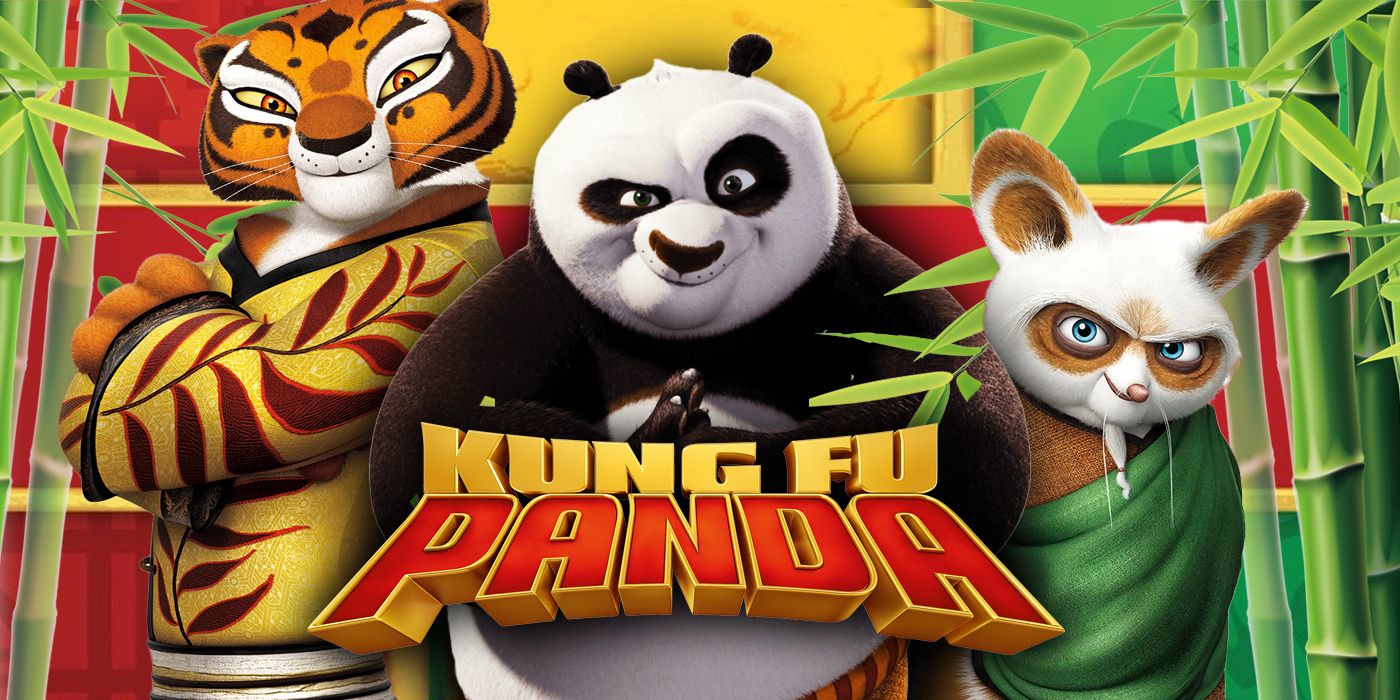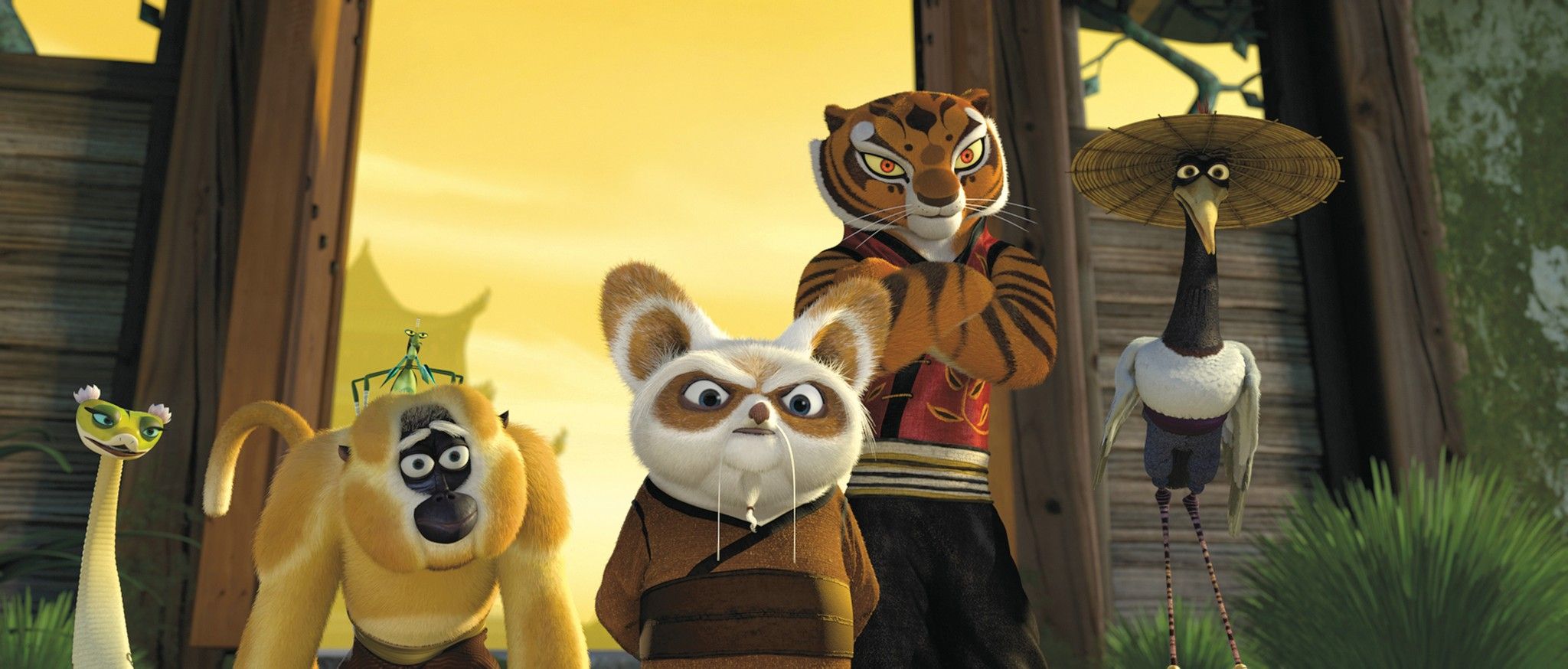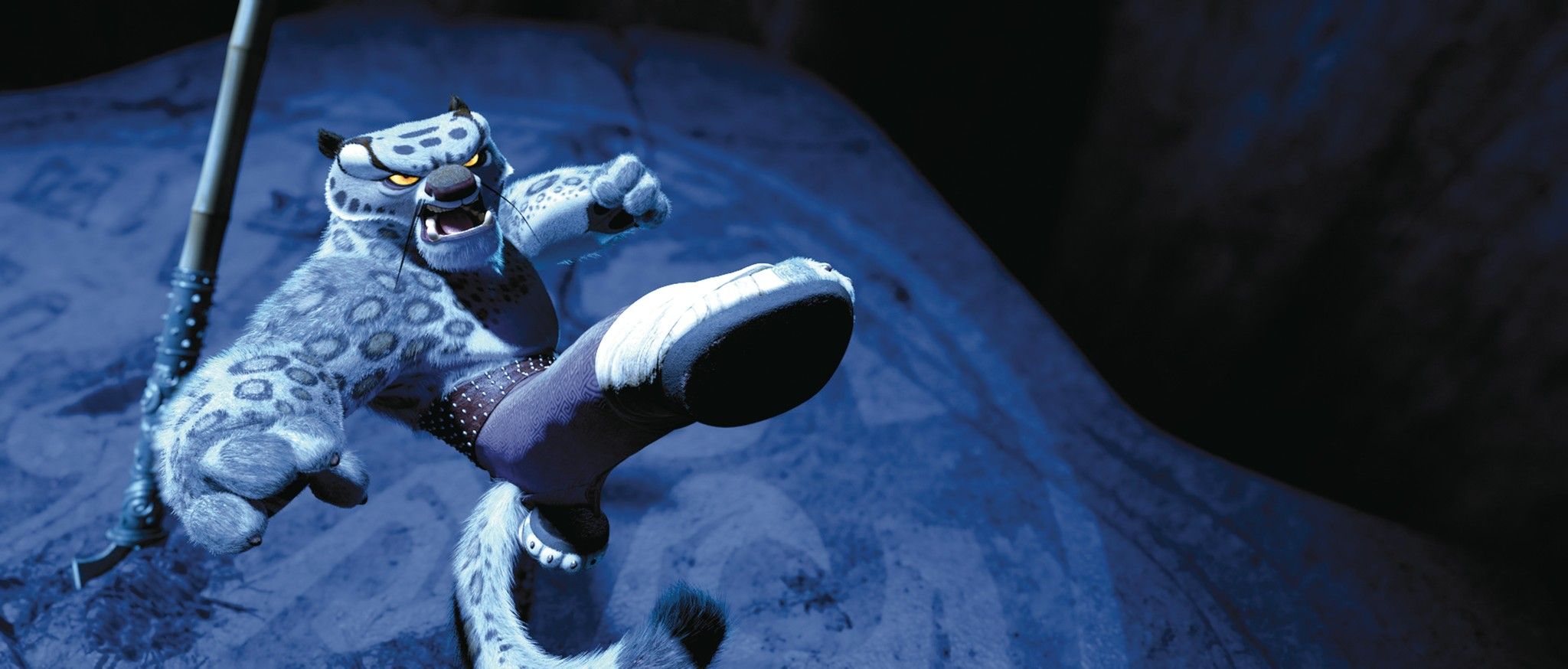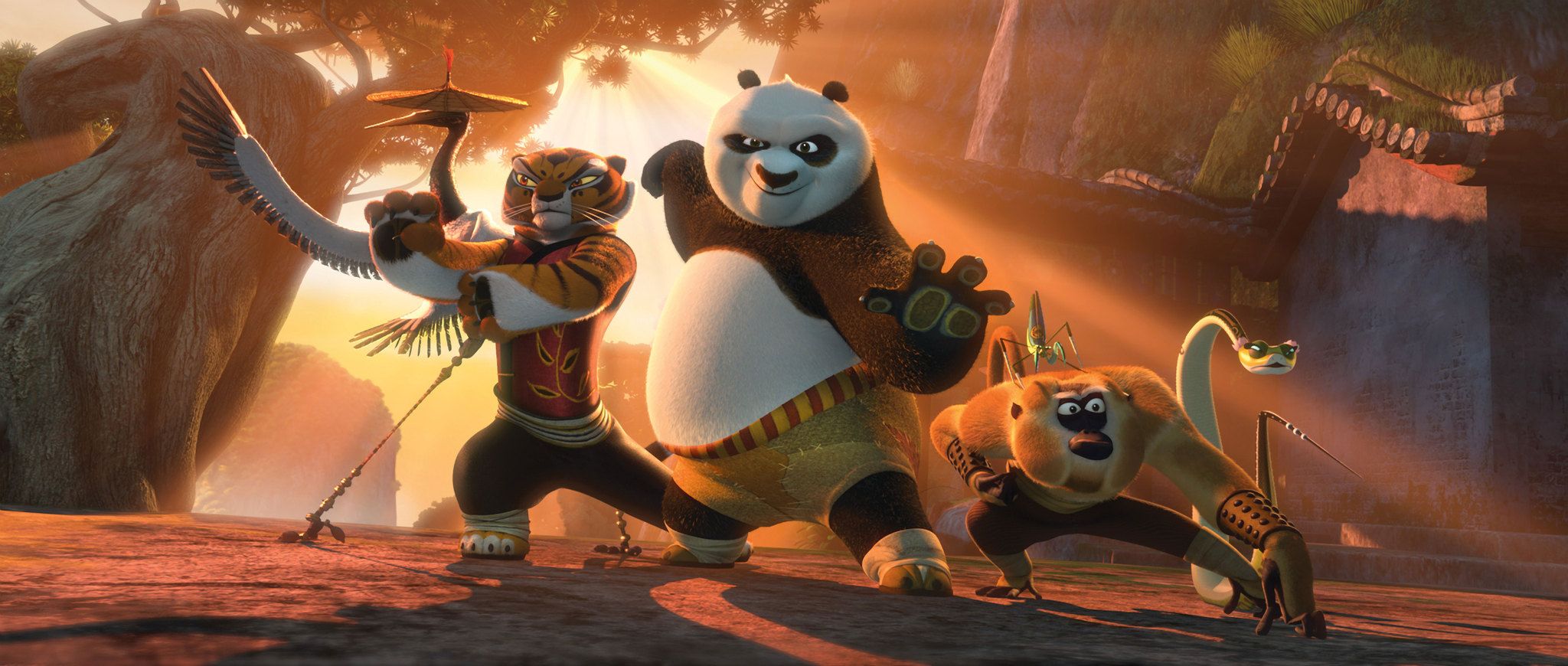DreamWorks Animation's Kung Fu Panda trilogy is just as much a martial arts epic as it is a family comedy. Across the three theatrical films released from 2008 to 2016, the adventures of Dragon Warrior Po (Jack Black), Master Shifu (Dustin Hoffman) and the Furious Five in the Valley of Peace achieved an enthralling blend of spiritual awareness, character-based humor and captivating drama. However, the series' greatest asset may not be found in its characters, story or even Jack Black’s vocal performance, but in its inspired action animation.
Simply put, Kung Fu Panda is about a fantasy world of animated animals who ward off evil with martial arts. On paper, it sounds like a basic premise not dissimilar to the likes of Teenage Mutant Ninja Turtles or any other Saturday morning action cartoon, but in execution, it takes full advantage of the animation medium and its premise to create action unlike any other animated film in recent memory.
The films’ animation style sought to intricately meld traditional Chinese martial arts with the animalistic behavior and anatomy of its anthropomorphic cast. Taking inspiration from traditionalist kung fu, the various animal-based martial arts styles were manifested into characters that shared their namesake (Mantis, Crane, Monkey, etc.). This gives the films not only a sense of cultural authenticity, but an opportunity to push the art of kung fu and its animal-inspired roots to an aesthetically literal place. Tigress (Angelina Jolie) fights in the martial style that bears her name while also move with the ferocity of an actual tiger. The characters execute their fighting prowess in a fusion of the traditional and the naturalistic in a way physically unattainable by live human actors.
Furthermore, from the animalistic kung fu, the elasticity and precision of the animation medium amplifies and exhilarates the intensity of the films’ combat sequences to a degree that live-action filmmaking could not capture.
The prison escape from the 2008 original stands as one of the franchises’ most spectacular sequences and illuminates the advantages of the film’s animation medium. The villainous snow leopard Tai Lung, voiced by Ian McShane, single-handedly breaks out of a mountainside prison stronghold designed specifically to detain him through feats of strength and power that exhibit his terrifying skills as he mows through legions of rhino guards. The sequence features gravity-defying acrobatics and an elastic reality that enhances the visceral feline might of the character and the spectacle of his combat style. Since the camera is permitted to go anywhere and the characters’ movements are malleable, the action can defy realism with explosions and employ quicker than life movements, yet still sit on the edge of believability as each hit and action is rooted in a grounded sense of choreography and impact.
The wolf attack that opens the 2011 sequel also greatly demonstrates the animation’s sense of action. Po and the Five come to the rescue of a musician's village pillaged by wolf bandits out to steal their metal for Lord Shen (Gary Oldman). Much like the first film’s prison escape, the sequence utilizes a kinetic dynamism and exaggeration to make the fight fast-paced and bestially acrobatic. This scene also incorporates physical comedy and musically inspired sound design to fully immerse the fight in its environment. Clashes and bangs of the village’s bands meld with the hits and blows of the combatants as the Five save the musicians and use instruments as weapons, creating a creative layout and sound pallet that is precisely executed through the carefully choreographed animation.
Kung Fu Panda's action animation enabled caricatured animals to adopt humanistic martial arts choreography and move with a flourishing speed that made them uniquely visceral and cartoony in the same breath. Animation in a film series such as Kung Fu Panda shows that animation's greatest strengths are in its suspension of reality and ability to exaggerate action to the benefit of the story's spectacle.




